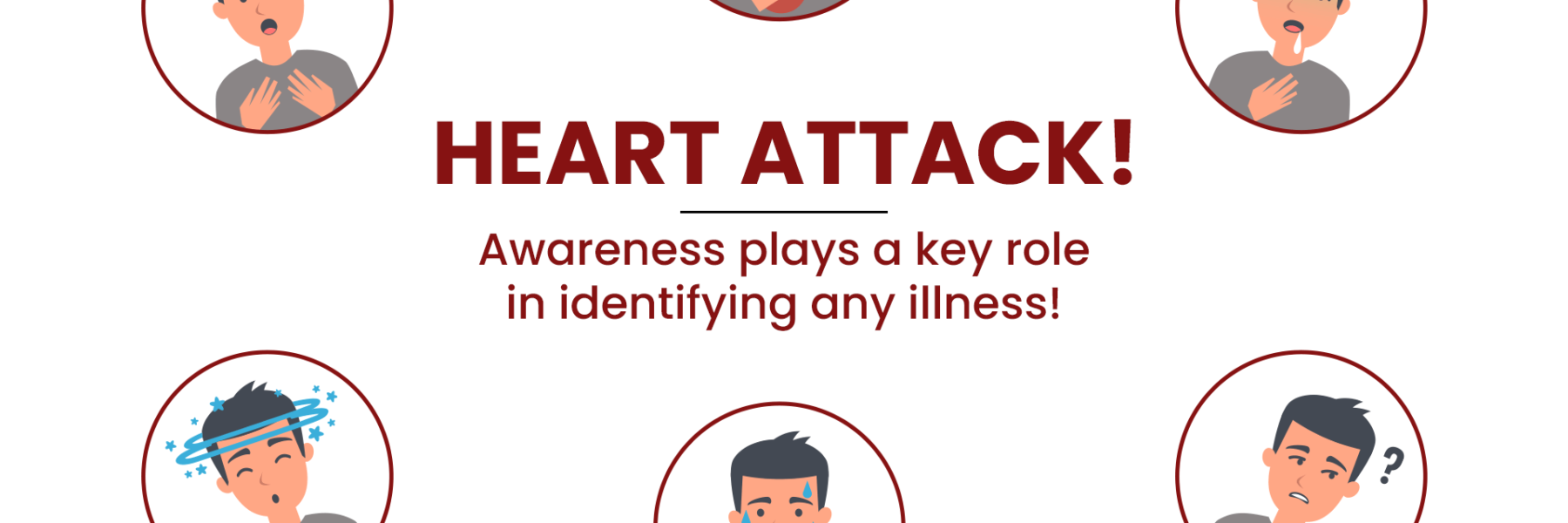What is a heart attack?
A heart attack happens when there is a sudden loss of blood flow to part of the heart muscle. This is usually caused by a blockage in one or more of the heart’s blood vessels, which are called coronary arteries. These arteries deliver blood and oxygen to your heart.
When an artery is blocked, the heart muscle doesn’t get enough oxygen, so it can’t pump blood to the rest of the body.
A heart attack is also known as a myocardial infarction.
A heart attack is a medical emergency. Without enough oxygen, your heart muscle can be permanently damaged.
In Australia, almost 1 in 50 people will experience a heart attack during their lifetime.
Symptoms
The major symptoms of a heart attack are:
Chest pain or discomfort. Most heart attacks involve discomfort in the center or left side of the chest that lasts for more than a few minutes or that goes away and comes back. The discomfort can feel like uncomfortable pressure, squeezing, fullness, or pain.
Feeling weak, light-headed, or faint. You may also break into a cold sweat.
Pain or discomfort in the jaw, neck, or back.
Pain or discomfort in one or both arms or shoulders.
Shortness of breath often occurs with chest discomfort, but it can also happen before chest discomfort.
How to help someone having a heart attack
If you are with someone who’s experiencing symptoms of a heart attack, call emergency services immediately and follow the instructions they give you regarding what to do.
If the person isn’t responsive and doesn’t have a pulse, doing cardiopulmonary resuscitation (CPR) or using an automated external defibrillator (AED) can be lifesaving.
Most businesses and many public places have AEDs, but if one isn’t present, continue to perform CPR until help arrives. Giving CPR can help pump oxygenated blood through a person’s body until emergency services arrive.
The sooner a person can get emergency medical attention, the less damage their heart muscle will likely sustain.
Also read: How Does Exercise Help to Deal With Stress?
What should you do if you have a heart attack?
If you suspect you’re having a heart attack, the AHATrusted Source advises calling 911 or your local emergency services immediately, rather than attempting to drive yourself to the hospital.
Paramedics can begin treating you when they arrive and monitor you on the way to the emergency department.
Follow the instructions of the emergency personnel on whether to take an aspirin and let them know if you have any medication allergies or bleeding. The antiplatelet qualities of aspirin may help break up the clot that might be blocking blood flow to your heart.
If possible, ask a family member, friend, or neighbor to be with you while you wait for the ambulance or are undergoing treatment at the hospital.
What to do to recover after a heart attack?
If you’ve had a heart attack, your heart may be damaged. This could affect your heart’s rhythm and its ability to pump blood to the rest of the body. You may also be at risk for another heart attack or conditions such as stroke, kidney disorders, and peripheral arterial disease.
You can lower your chances of having future health problems following a heart attack with these steps:
Physical activity: Talk with your health care team about the things you do each day in your life and work. Your doctor may want you to limit work, travel, or sexual activity for some time after a heart attack.
Lifestyle changes: Eating a healthier diet, increasing physical activity, quitting smoking, and managing stress, in addition to taking prescribed medicines, can help improve your heart health and quality of life. Ask your health care team about attending a program called cardiac rehabilitation to help you make these lifestyle changes.
Cardiac rehabilitation: Cardiac rehabilitation is an important program for anyone recovering from a heart attack, heart failure, or other heart problems that require surgery or medical care. Cardiac rehab is a supervised program that includes.
